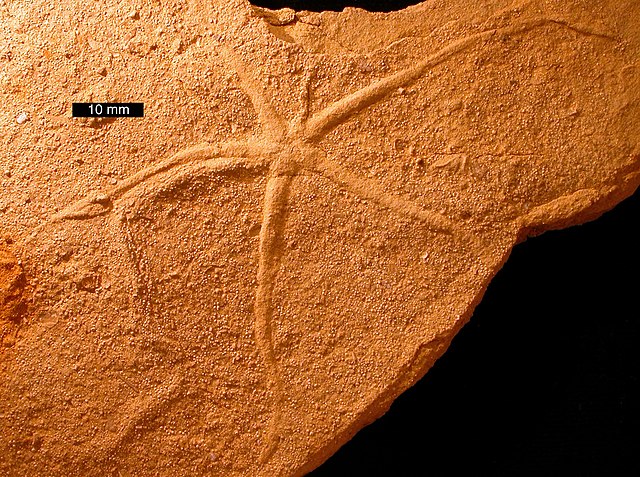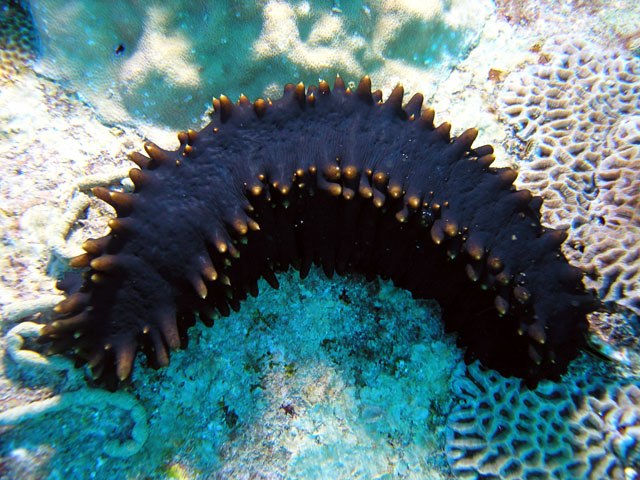Brittle stars, serpent stars, or ophiuroids are echinoderms in the class Ophiuroidea, closely related to starfish. They crawl across the sea floor using their flexible arms for locomotion. The ophiuroids generally have five long, slender, whip-like arms which may reach up to 60 cm (24 in) in length on the largest specimens.
Brittle star
Brittle star in Kona, Hawaii
Ophiopetra lithographica from the Lower Hienheim Beds (Lower Tithonian, Upper Jurassic) near Regensburg, Germany
Asteriacites, a trace fossil of an ophiuroid; Carmel Formation (Middle Jurassic), near Gunlock, Utah; scale bar is 10 mm.
An echinoderm is any deuterostomal animal of the phylum Echinodermata, which includes starfish, brittle stars, sea urchins, sand dollars and sea cucumbers, as well as the sessile sea lilies or "stone lilies". While bilaterally symmetrical as larvae, as adults echinoderms are recognisable by their usually five-pointed radial symmetry, and are found on the sea bed at every ocean depth from the intertidal zone to the abyssal zone. The phylum contains about 7,600 living species, making it the second-largest group of deuterostomes after the chordates, as well as the largest marine-only phylum. The first definitive echinoderms appeared near the start of the Cambrian.
Echinoderm
A brittle star, Ophionereis reticulata
A sea cucumber, Stichopus chloronotus, from Malaysia
Starfish of varied colours








